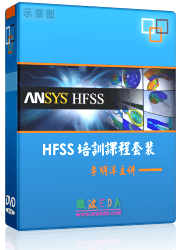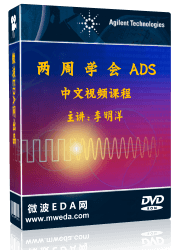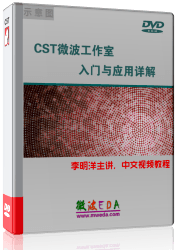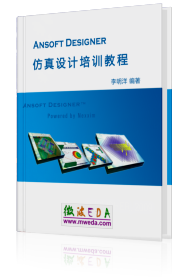Special Solver Parameters - General
 Solver Solver Start Simulation Start Simulation Specials Specials General General
General settings frame
Stability factor
for timestep: Enter here a stability factor that will be multiplied
to the current valid stability limit for the numerical timestep. In case
that a time domain calculation shows some slight effects of instability,
a small reduction of the stability factor might recover a stable state.
Note: Choosing a factor greater
than one is not advisable and will likely produce instability.
Restart solver
after instability abort: If this check button is activated, the
solver is automatically restarted twice with a reduced timestep after
an instability abort. In case that the occurred instability is due to
the time discretization, this process helps to provide a stable simulation
during the restarted run.
Consider two-port
reciprocity with energy balance limit of ... : This check button
enables the possibility that the S-Parameters for two-port structures
meeting the condition of reciprocity (loss-free two-port system) will
be mirrored by the solver, so that only one simulation run is performed.
This reciprocity condition is determined by checking the energy balance:
For reciprocal and loss free structures the energy balance should be one.
If the difference of the simulated balance to one is less than the given
limit value over the whole frequency
range the structure is assumed to be loss-free.
Please note that no fields are calculated for
the mirrored port. If this option is not set, the transient solver performs
all calculation runs even for symmetric ports. Also in case of distributed
ports the setting of the reciprocity check box is ignored and all calculation
runs are performed remotely.
Automatic time
signal sampling: If this check button is enabled, the transient
solver automatically samples all time signals that are written to disk
in order to reduce the data amount while still fulfilling the sampling
theorem. By deactivating this automatic functionality the signals are
written with highest possible sampling rate, i.e. every timestep.
TDR analysis:
If this check button is enabled, the transient solver performs an online
TDR analysis for step or Gaussian excitation signals and adds the corresponding
signal curve into the result tree. The TDR calculation is applied for
single port excitations of discrete ports or waveguide ports with (Q)TEM
modes.
Please find more detailed information about TDR analysis on the general
help page for Signals
in Transient Simulations.
Use broadband phase
shift with lower bound factor of ... :
If this check button is enabled, the phase shift defined either in the
simultaneous
excitation dialog or in the plane
wave setup dialog will be considered as a broadband behavior and thus
ignoring the corresponding reference frequency setting, respectively.
The broadband phase shift filter is computed by means of a Hilbert filter
which guarantees accurate results in the frequency range [ lower
bound factor * fMax, fMax ] where fMax
is the upper simulation frequency range.
Ensure shielding
for all ports: If this check button is enabled, a shielding frame
of PEC or PMC type surrounding each waveguide port region will be added.
This option causes higher reflections at ports. Therefore, it should only
be used if a calculation has become unstable. Note that this setting will
be ignored for already electrically shielded waveguides (e.g. coaxial
waveguides). Leave this button unchecked to apply the default treatment
for waveguide port boundaries.
Frequency settings frame
Fmin / Fmax:
These text fields are for information purposes only. They display the
minimal and maximal chosen frequencies. To change these values, you may
go into the Frequency Range
Setting dialog box in the Main menu under Solve  Frequency.... Frequency....
Samples:
Here, you may specify the number of samples that will represent the S-Parameters.
Please note that the simulation has to be repeated, if you change this
number. Please note that this number has nearly no effect on the total
simulation time!
OK
Accepts the input and closes the dialog.
Cancel
Closes this dialog box without performing any
further action.
Help
Shows this help text.
See also
Solver,
Signals
in Time Domain Simulations Overview,
Special Solver Parameters: Waveguide, Steady State, AR-Filter, Material, Solver




HFSS视频教程
ADS视频教程
CST视频教程
Ansoft Designer 中文教程
|